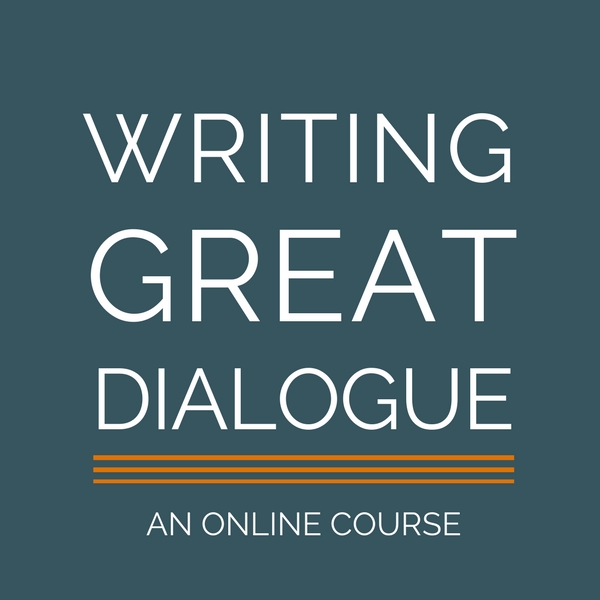COMING SOON FROM JOAN DEMPSEY

FREE SAMPLE COURSE
You'll have a chance to "kick the tires" before enrolling in the full Writing Great Dialogue course. Enjoy free lessons from the master class.
Shall I notify you when the free sample course is available?
I won't send spam—I promise!
Why is it so important to write great dialogue?
- GREAT DIALOGUE ATTRACTS AGENTS AND PUBLISHERS. Even if other areas of your manuscript are still rough, great dialogue indicates that you've got what it takes to write a terrific book, and they're more apt to take a chance on you.
- GREAT DIALOGUE CAPTIVATES READERS. If a reader gets pulled in by your dialogue, chances are far better that she'll love your characters and want to follow them to the end of your story.
- GREAT DIALOGUE MEANS GREAT STORY. Powerful dialogue isn't just about characters talking to each other, it's also about story! (And character, and theme, and setting, and tone.)
In short, mastering dialogue is the fastest, most powerful way to improve your manuscript.
CHECK OUT THE FULL CURRICULUM
3 Sections | 9 Comprehensive Modules | 38 Targeted Lessons


READ

WATCH

WRITE

LISTEN

REFLECT

DISCUSS
WRITING GREAT DIALOGUE
SECTION ONE
FOUNDATIONS OF GREAT DIALOGUE
|
THE DEFINITION AND FUNCTION OF DIALOGUE
Develop a deep understanding of what dialogue is (and what it isn't), and get a rock-solid handle on the five functions of dialogue: reveal character, story, theme, setting and tone.
|
THE CONTENT OF DIALOGUE
- Determine the difference between writing what gets said (a character's public self) and what's left unsaid (the secret self)
- Understand why action is crucial and activity is problematic, and learn how to tell the difference between them
- Get crystal clear about writing subtext (what's below the meaning of the surface words)
- Ensure dialogue is relevant to the story
|
METHODS FOR EXPRESSION
- Compose dialogue with rich, evocative language
- Master the terrifically important body language that accompanies dialogue
- Discover the value of brevity
- When dialogue gets interrupted—how to perfect the pause
- Convey silence (and discover its power)
- Create emotional dialogue that's resonant, not syrupy
- Use humor effectively
Shall I notify you when the free sample course is available?
I won't send spam—I promise!
WRITING GREAT DIALOGUE
SECTION TWO
COMMON PROBLEMS WITH DIALOGUE (AND HOW TO FIX THEM)
|
BELIEVABILITY
- Recognize when dialogue is unbelievable (and why that makes it so problematic)
- Cut out all useless talk
- Determine the difference between emotional dialogue and purple prose (the overly emotive dialogue)
- Avoid "know-it-all" dialogue
- Figure out just when dialogue has become a mouthpiece for all your great research
- Explore the ways in which overwriting can deaden your dialogue
LANGUAGE
- Avoid using clichéd language
- Stay away from generalities instead of using the all-important specifics
- Keep yourself (as the author) from intruding into a character's dialogue
- Make sure dialogue is clear, not convoluted
- Learn why active dialogue is better than passive
- Keep dialogue lean and uncluttered
INTERNAL "DIALOGUE"
- How to manage speech when your character is alone:
- talking to herself
- having an imaginary conversation
- speaking on the telephone
- conversing telepathically
- What to do when your character is thinking
|
DIALOGUE UNIQUE TO CHARACTER
- How to write dialogue so it sounds natural, fluid and authentic to each unique character, rather than dull, stilted or contrived.
- Discover what it takes to write characters who are unlike yourself (women writing men, young writing old, Catholic writing Muslim, and the like).
- Explore how to successfully incorporate different dialects, foreign languages, professional jargon and slang in a way that's true to your character. Consider speech specific to the era, geographical region, profession, and other factors specific to your characters.
- Download a list of resources that can help you make sure your dialogue sounds authentic.
|
GET THE BALANCE RIGHT
- Learn when to write things in summary exposition rather than in dialogue (and vice-versa)
- Discover how you can tell when you've written too much dialogue
- Understand the value of interrupting dialogue with tags or action, and practice determining when you should do this, and when it's best not to interrupt
- Explore the challenges of writing dialogue for groups of two or more characters (especially when you have two or more of the same gender)
- Incorporate back story
Shall I notify you when the free sample course is available?
I won't send spam—I promise!
WRITING GREAT DIALOGUE
SECTION THREE
TAGS, STYLES, TENSES AND PUNCTUATION
|
DIALOGUE TAGS (ATTRIBUTIONS)
Learn the ins and outs of dialogue tags: what to use (and what to avoid), where to put them in your sentences and how to decide which position is best, and when you should and shouldn't attach adverbs to your tags.
|
THE STYLES OF DIALOGUE
There are various ways in which dialogue can be structured on the printed page. Determine which of the three common styles works best for what you're writing, and decide how often you want to use paragraph breaks.
|
TENSES & PUNCTUATION
- Master the ways in which verb tenses vary within and outside of dialogue
- Practice punctuating dialogue so you never have to think about it again (American and British English)
WRITING GREAT DIALOGUE
WHAT'S NOT TO LIKE ABOUT WRITING GREAT DIALOGUE?
Shall I notify you when the free sample course is available?
I won't send spam—I promise!